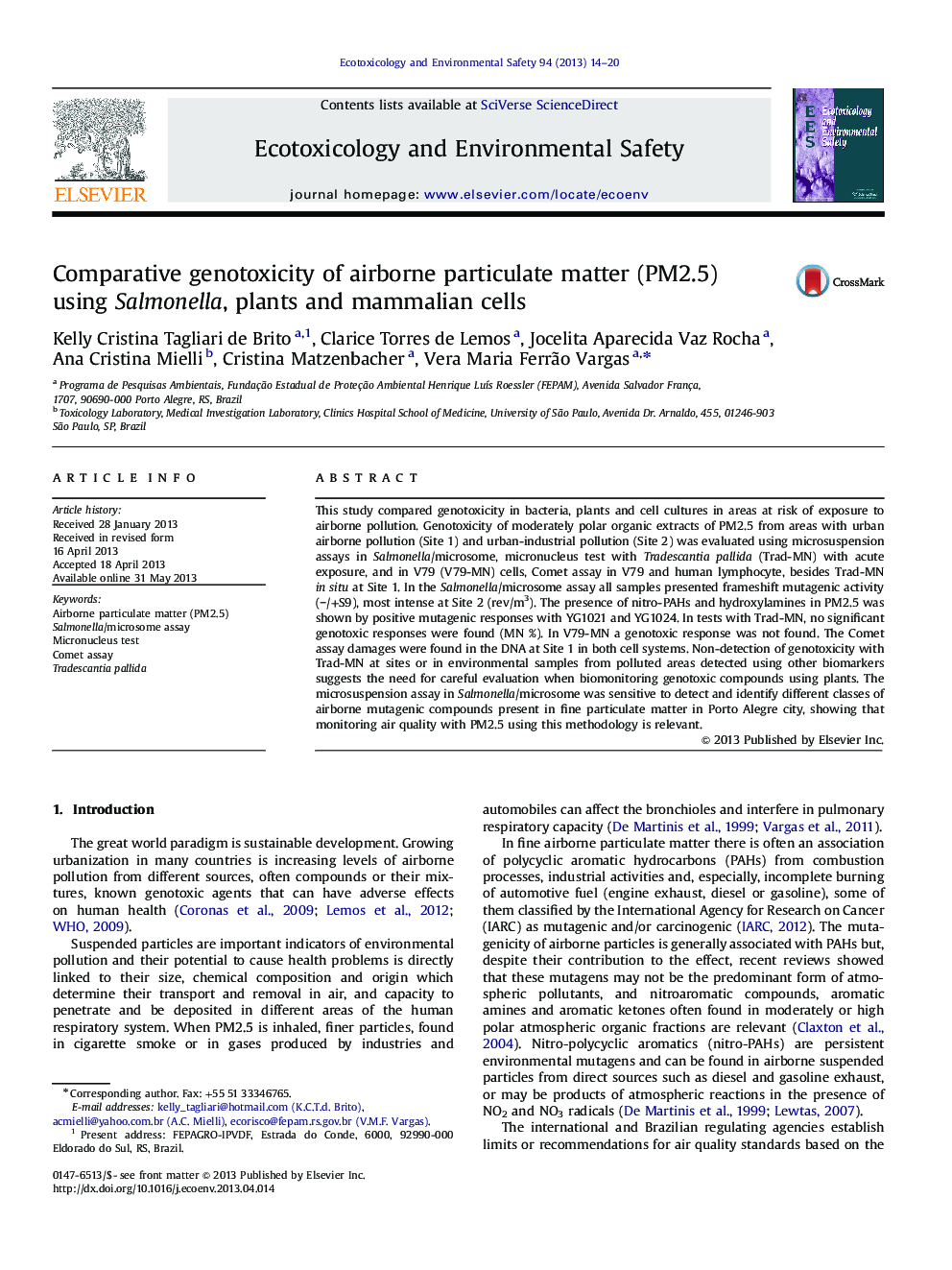| کد مقاله | کد نشریه | سال انتشار | مقاله انگلیسی | نسخه تمام متن |
|---|---|---|---|---|
| 4420478 | 1618969 | 2013 | 7 صفحه PDF | دانلود رایگان |

• PM2.5 was analyzed for genotoxicity in Salmonella, plants and mammalian cells.
• Salmonella was sensitive to detect and identify mutagenic compounds in PM2.5.
• No genotoxicity was found in PM2.5 with the V79-MN and Trad-MN assay.
• SCGE with mammalian cells were partially sensitive to detect genotoxicity in PM2.5.
• PM2.5 were genotoxic in Salmonella, partially in SCGE and not mutagenic in plants.
This study compared genotoxicity in bacteria, plants and cell cultures in areas at risk of exposure to airborne pollution. Genotoxicity of moderately polar organic extracts of PM2.5 from areas with urban airborne pollution (Site 1) and urban-industrial pollution (Site 2) was evaluated using microsuspension assays in Salmonella/microsome, micronucleus test with Tradescantia pallida (Trad-MN) with acute exposure, and in V79 (V79-MN) cells, Comet assay in V79 and human lymphocyte, besides Trad-MN in situ at Site 1. In the Salmonella/microsome assay all samples presented frameshift mutagenic activity (−/+S9), most intense at Site 2 (rev/m3). The presence of nitro-PAHs and hydroxylamines in PM2.5 was shown by positive mutagenic responses with YG1021 and YG1024. In tests with Trad-MN, no significant genotoxic responses were found (MN %). In V79-MN a genotoxic response was not found. The Comet assay damages were found in the DNA at Site 1 in both cell systems. Non-detection of genotoxicity with Trad-MN at sites or in environmental samples from polluted areas detected using other biomarkers suggests the need for careful evaluation when biomonitoring genotoxic compounds using plants. The microsuspension assay in Salmonella/microsome was sensitive to detect and identify different classes of airborne mutagenic compounds present in fine particulate matter in Porto Alegre city, showing that monitoring air quality with PM2.5 using this methodology is relevant.
Journal: Ecotoxicology and Environmental Safety - Volume 94, 1 August 2013, Pages 14–20